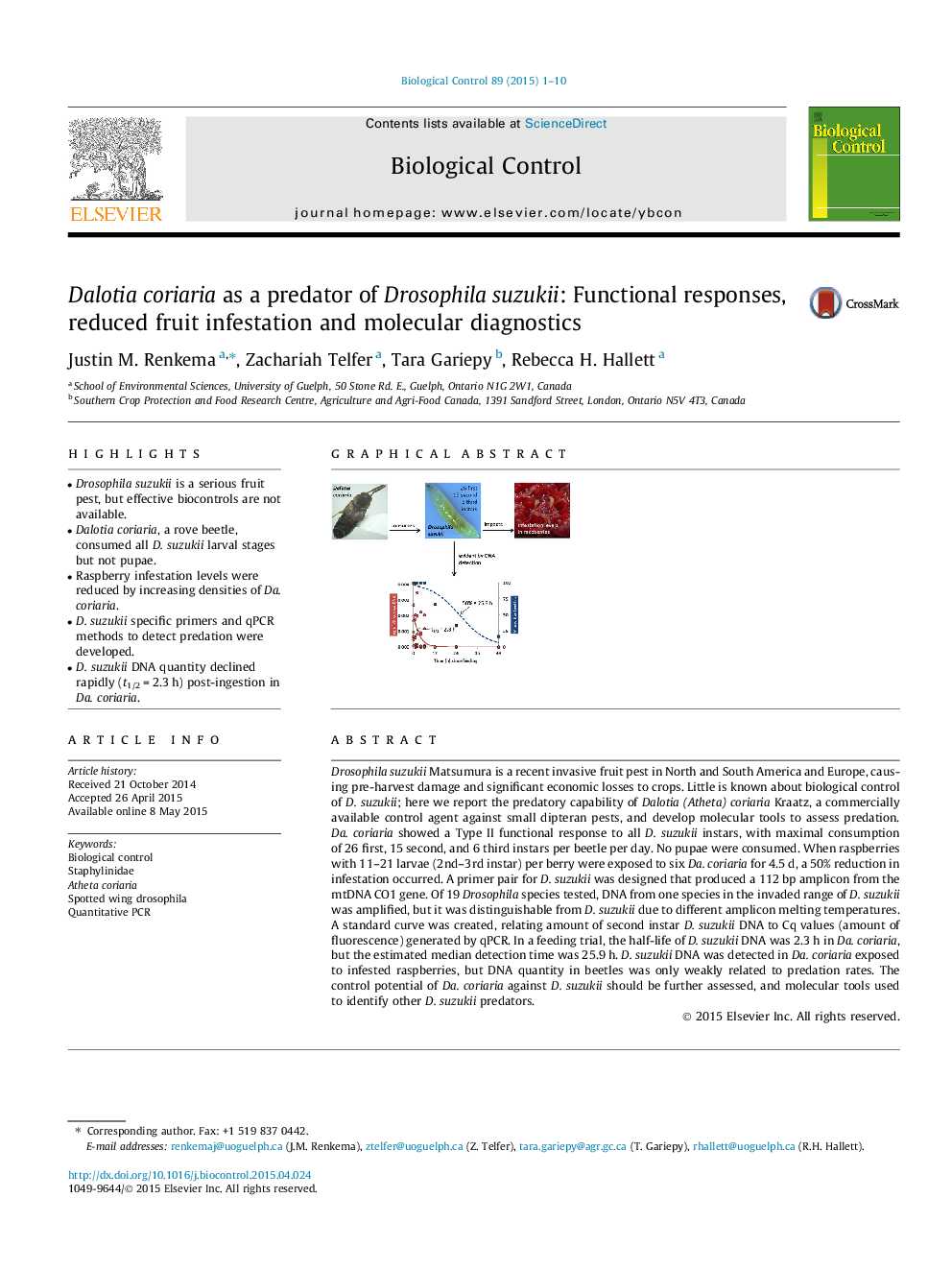| Article ID | Journal | Published Year | Pages | File Type |
|---|---|---|---|---|
| 4503739 | Biological Control | 2015 | 10 Pages |
•Drosophila suzukii is a serious fruit pest, but effective biocontrols are not available.•Dalotia coriaria, a rove beetle, consumed all D. suzukii larval stages but not pupae.•Raspberry infestation levels were reduced by increasing densities of Da. coriaria.•D. suzukii specific primers and qPCR methods to detect predation were developed.•D. suzukii DNA quantity declined rapidly (t1/2 = 2.3 h) post-ingestion in Da. coriaria.
Drosophila suzukii Matsumura is a recent invasive fruit pest in North and South America and Europe, causing pre-harvest damage and significant economic losses to crops. Little is known about biological control of D. suzukii; here we report the predatory capability of Dalotia (Atheta) coriaria Kraatz, a commercially available control agent against small dipteran pests, and develop molecular tools to assess predation. Da. coriaria showed a Type II functional response to all D. suzukii instars, with maximal consumption of 26 first, 15 second, and 6 third instars per beetle per day. No pupae were consumed. When raspberries with 11–21 larvae (2nd–3rd instar) per berry were exposed to six Da. coriaria for 4.5 d, a 50% reduction in infestation occurred. A primer pair for D. suzukii was designed that produced a 112 bp amplicon from the mtDNA CO1 gene. Of 19 Drosophila species tested, DNA from one species in the invaded range of D. suzukii was amplified, but it was distinguishable from D. suzukii due to different amplicon melting temperatures. A standard curve was created, relating amount of second instar D. suzukii DNA to Cq values (amount of fluorescence) generated by qPCR. In a feeding trial, the half-life of D. suzukii DNA was 2.3 h in Da. coriaria, but the estimated median detection time was 25.9 h. D. suzukii DNA was detected in Da. coriaria exposed to infested raspberries, but DNA quantity in beetles was only weakly related to predation rates. The control potential of Da. coriaria against D. suzukii should be further assessed, and molecular tools used to identify other D. suzukii predators.
Graphical abstractFigure optionsDownload full-size imageDownload as PowerPoint slide
